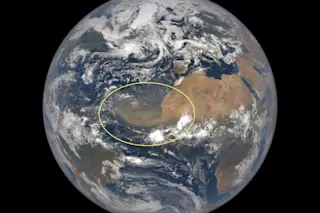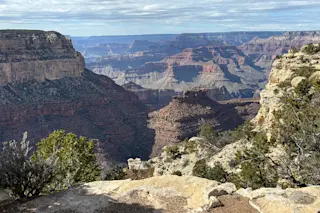A colossal cloud of dust that rose up over the Sahara Desert in mid-June has been swept more than 4,000 miles across the Atlantic Ocean and now threatens to bring haze and health impacts to the U.S.
The cloud is so prominent that it is easily seen in images of Earth acquired by the Deep Space Climate Observatory spacecraft orbiting a million miles away.
Strong updrafts in the atmosphere above the Sahara lofted huge amounts of dust on or around June 13, 2020. The cloud was then picked up by the prevailing winds and blown west out over the Atlantic Ocean, eventually reaching the Caribbean.
An animation of Suomi NPP satellite images shows the Saharan dust cloud blowing westward over the Atlantic between June 13 and 22, 2020. (Credit: Images: NASA Worldview. Animation: Tom Yulsman)
Images: NASA Worldview. Animation: Tom Yulsman
“Normally, hundreds of millions of tons of dust are ...














